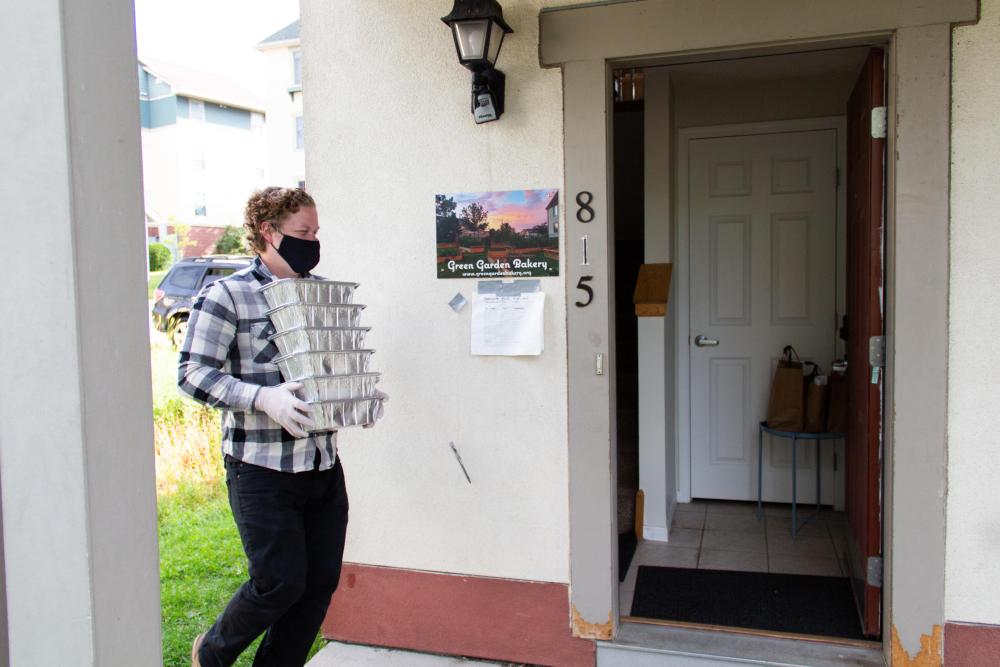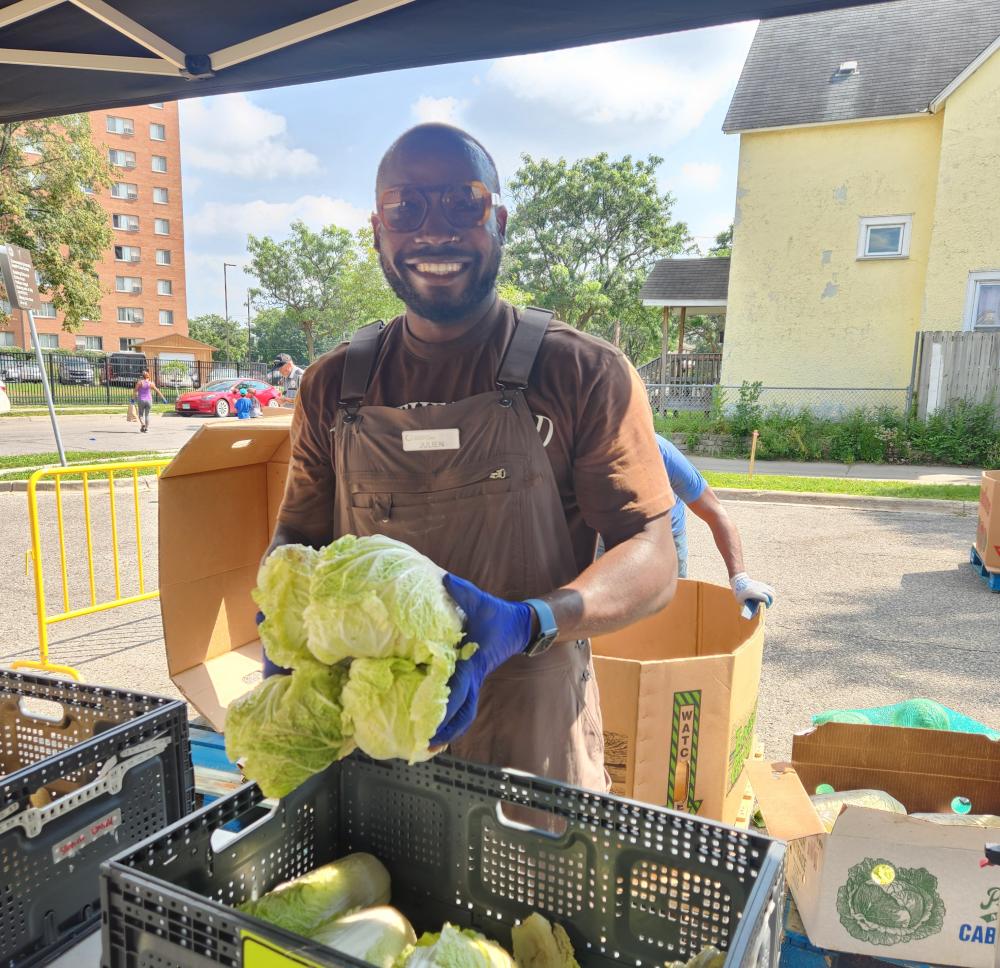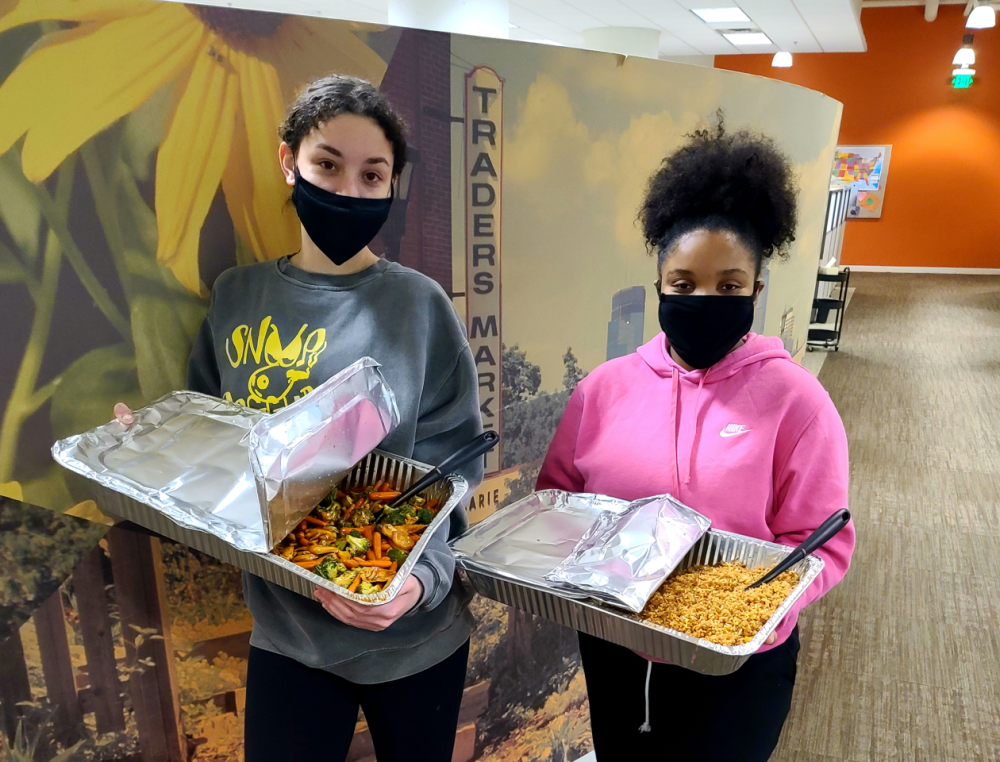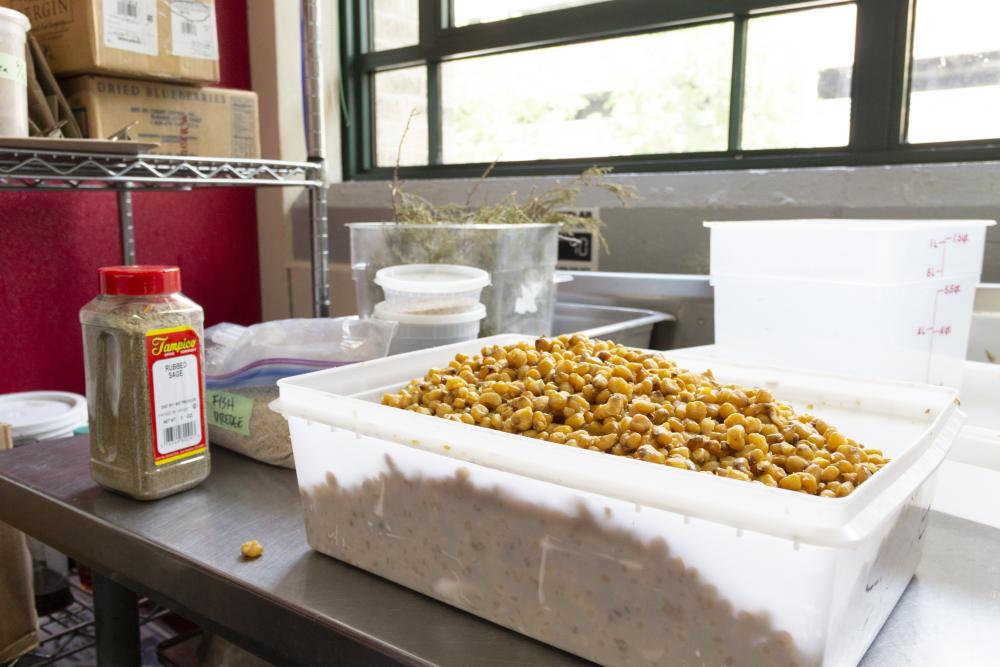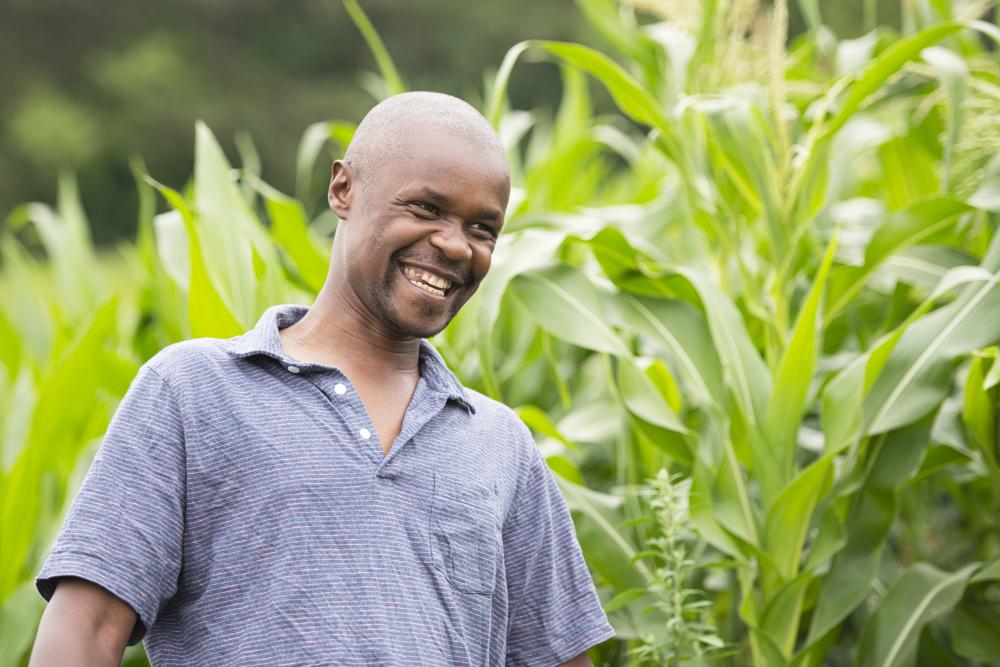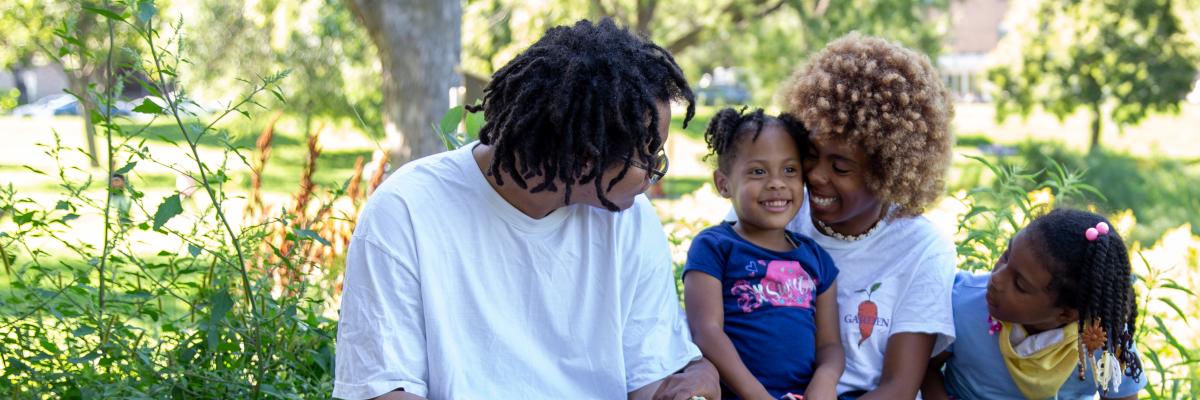
THE HUNGER DIVIDE
Communities of color often face disproportionate rates of hunger and food insecurity. We refer to these disparities as the racial hunger divide, and we’re committed to confronting and closing it.
Understanding—and Solving—the Hunger Divide
How Racial Disparity Impacts Hunger
In 2022, an estimate 9.4% of Minnesotans were food insecure. Within this statistic, however, were dramatically higher rates of food insecurity for some of our neighbors of color: 23% of Hispanic Minnesotans and 29% of Black Minnesotans were food insecure in 2022. For White people, the rate was only 7%.
We refer to these disparities as the racial hunger divide.
Food banks like Second Harvest Heartland must be part of the solution in addressing racial injustices and making access to healthy food fair and equitable for all. It’s why we’re investing $13.2 million to confront and eliminate racial disparities in hunger, and taking a leadership role in tackling this important issue.
We’re committed to:
- Applying a racial equity lens to our programs, services and operations
- Elevating racial hunger divide work as a strategic priority of our organization
- Improving community engagement and partnerships with other organizations in fighting the hunger divide
- Developing and reporting our effort and progress
What Causes the Hunger Divide?
Tackling a Complicated and Deeply Rooted Problem
For many, hunger stems from an unexpected event: a car accident, an unexpected medical bill, a job loss or divorce.
However, the circumstances that lead to food insecurity can be much more complicated, pervasive, and deeply rooted, particularly for non-White households:
- Living wages
- Affordable housing
- Reliable transportation access
- Healthcare access and affordability
- Racism and discrimination—and more.
When so many factors contribute to food insecurity, it’s clear why households struggle. Stark racial disparities exist in access to food, as well as many other measurable markers, from income and home ownership to education and wealth.
To better understand disparities is to better understand the hunger divide. Raising awareness, getting involved and actively addressing gaps brings us one step closer to our mission of ending hunger together and creating a more just and equitable future.
Hear from Partners. Join the Work.
On October 27, 2022, we hosted Toward A More Equitable Future, a panel conversation focused on insights, ideas and action in addressing the racial hunger divide, together. You can watch the conversation here, then reach out to join us in this work.
HOW WE'RE ADDRESSING THE RACIAL HUNGER DIVIDE TODAY
Understanding the Racial Hunger Divide
Explore these resources to better understand the root causes and potential solutions to racial disparities in hunger and other areas.
Research: Understanding the Racial Hunger Divide
- From the Federal Reserve Bank of New York (2022) Was the 2021-22 Rise in Inflation Inequitable?
- From the Robert Wood Johnson Foundation (2022) High U.S. Inflation Rates Are Having a More Serious Impact on Black, Latino, and NAtive American Households than White Households
- From Feeding America and Food Bank News (2022) What the Most Recent Map the Meal Gap Data Tells Us
- From Native American Agriculture Fund (2022) Reimagining Hunger Responses in Times of Crisis: Insights from Case Examples and a Survey of Native Communities' Food Access During COVID-19
- From The Guardian (2021)One in Four Faced Food Insecurity in America's Year of Hunger, Investigation Shows
- From Duke University’s World Food Policy Center (2021) Examining Whiteness in Food Systems From TPT Original (2020) Why Do So Many Minnesotans Experience Food Insecurity?
- From the Amherst H. Wilder Foundation (2020) New Food Insecurity Data Highlight Minnesota’s Continuing Disparities and the need for Multi-Sector Solutions
- From Drexel University (2019) From Disparities to Discrimination: Getting at the Roots of Food Insecurity in America
Voices and Solutions: Considering the Racial Hunger Divide From the Frontlines
- Food Insecurity During Pandemic Prompts Tribes to Bolster Food Sovereignty(Nevada Current)
- Hunger on campus isn’t a joke about ramen: How unmet needs keep Minnesota students from enrolling in community college (Sahan Journal)
- The Pandemic Didn’t ‘End Hunger’—It Exposed Systemic Racism Instead(Civil Eats)
- The Pandemic Reveals Racial Gaps in School Meal Access (Civil Eats)
- For Minnesotans of Color, a New Food Desert Underscores Disparities (Kyeland Jackson, Twin Cities Public Television)
- How Food Insecurity, Safety and Discrimination Are impacting Young Adults (The Minnesota Daily)
- The Hunger Crisis Hits Minnesota and It’s About to Get Much Worse (Sahan Journal)
- Food Justice Learning Series(Food Recovery Network)
- A Guerilla Gardener in South Central LA (TED)

